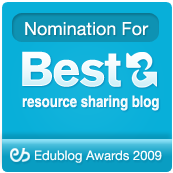Hashtags and CamelCase
Support for Hashtags were added to Twitter in 2007, before this they were used but the platform didn’t create links on them for searching and grouping conversations. Since then they have appeared on every major platform as a way to reach a wider audience, collate posts to an event or topic, and have generally been one of the most important developments on the internet (in my mind) ever.
We even do the air-fingers and say ‘hashtag’ when we talk to somehow indicate in a speech the importance of hashtags. (What is that about?!)
But it’s still amazing that the platforms don’t do enough to encourage the use of camel case writing.
Firstly, what is ‘camel case’?
CamelCase is a way to separate the words in a phrase by making the first letter of each word capitalized and not using spaces. It is commonly used in web URLs, programming and computer naming conventions. It is named after camels because the capital letters resemble the humps on a camel’s back
Gaven Wright
Examples (with and without camel case):
- SocMedHE22 – so much easier to read than #socmedhe22
- #HappyBirthdayToMe instead of #happybirthdaytome
- #LeaveNoOneBehind (as in the header image of this post) or #leavenoonebehind
And now for some truly awful hashtags that someone should have spotted before they used them
- For Susan Boyle’s new album release party … #susanalbumparty could be read as #SusAnalBumParty or, as it should be read, as #SusanAlbumParty
- The Chester Literary Festival misused the camel case when they chose #CLiTFest. I’ll leave this one for you to work out.
What I don’t understand though is why the platforms aren’t doing more to encourage the use of camel case in their suggested hashtags. This is from LinkedIn, when sharing a post and I want to incorporate a two-or-more-word hashtag:

What’s easier to read … #learnenglishonline or #LearnEnglishOnline
It would be so easy for Twitter, LinkedIn or other platforms to suggest the appropriate #LearnEnglish or #LearningDesign or #LearnEnglishOnline as an aid to the user, but also to increase accessibility for those with sight problems, using screen readers, and other visual impairments. This is an important way we read, interact, or engage with each other now, surely this should have been higher up the priority list of the platform developers?
Someone more qualified than me can explain how to do it, and why it hasn’t been done yet. But if the technology exists to join words to form the basis of a conjoined hashtag, then why not the ability to identify the first letter of each word and auto-capitalise it? Anyone?
- This post is Day 71 of my #100DaysToOffload challenge. Want to get involved? Find out more at 100DaysToOffload.com
Photo by Randy Tarampi on Unsplash


















